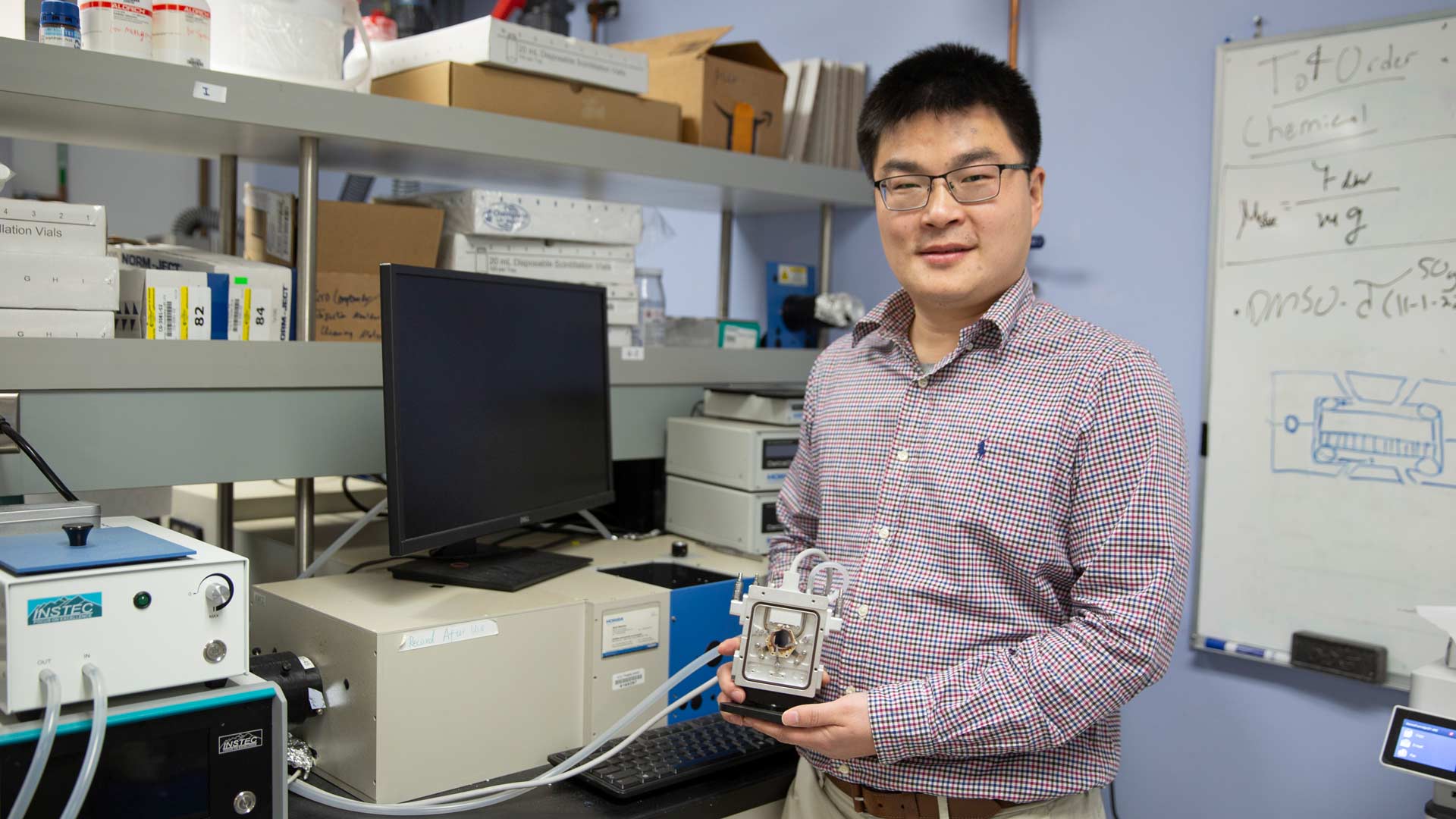
Unpacking a plastic paradox
Associate Professor Kailong Jin earns NSF CAREER Award to explore polymer properties

Demand for plastics exists in a constant paradox: thin yet strong, cheap yet sophisticated, durable yet degradable.
The various traits of plastics are determined by the polymer used to make the plastic, which can crystallize in different ways based on how the polymers interact with the matter around them.
Despite the demand for plastics in manufacturing, there are significant gaps in knowledge regarding plastic production and even less for sustainable alternatives. Current degradable plastic alternatives don’t possess the durability of traditional plastics, making them less desirable for manufacturers to adopt.
Understanding the nuances of the polymer’s solidifying process, known as crystallization, can advise researchers on regulating a polymer’s durability throughout its lifespan, from service to degradation.
Kailong Jin, an assistant professor of chemical engineering for the School for Engineering of Matter, Transport and Energy, part of the Ira A. Fulton Schools of Engineering at Arizona State University, is receiving a National Science Foundation Faculty Early Career Development Program, or CAREER, Award and $640,000 over five years to explore how polymers in plastics crystalize to advance degradable plastic alternatives.
“We are trying to understand the fundamental phenomena of how plastics crystalize so that we can better design these materials for optimal application and degradation,” Jin says.
Lighting the path to novel plastics
Jin is exploring how polymers crystallize by incorporating a dye-labeling technique to visualize polymer behaviors at different junctions, causing them to produce a visible and quantifiable signal that illuminates the inner workings of the crystallization process.
“With previous techniques, researchers were only able to look at crystallization as a big picture to look at bulk properties,” Jin says. “We are compounding those methods with fluorescence spectroscopy and fluorescence microscopy to put labels at specific points to test information at those spots. It’s a powerful technique for understanding the precision of these processes.”
Jin employs a combination of fluorescent microscopy, atomic force microscopy and x-ray scattering to delve deeper into the crystallization process of sustainable polymers. This approach integrates techniques that have not yet been traditionally examined.
He attributes the concept to his distinctive background in polymer physics, cultivated during his doctoral studies. He asserts that existing methods have faced challenges in obtaining localized data, a hurdle that the fluorescence technique may be capable of overcoming.
“People have a lot of theories about crystallization, but they don’t have sufficient experimental evidence to confirm if a theory is wrong or not,” Jin says. “Advancing knowledge at this fundamental point of the research could have a broad impact.”
Solidifying community connections
Attracted by its renowned status as a hub for sustainable polymer research, Jin joined ASU following impactful contributions to research made by Timothy Long, who serves as the director of the Biodesign Center for Sustainable Macromolecular Materials and Manufacturing and holds a professorship in materials science and engineering in the Fulton Schools.
“I saw the center as an opportunity to build something together,” Jin says. “Now we have a great group of professors working on making sustainable polymer plastics as a team.”
Jin is honored to receive the CAREER award, a recognition reserved for early career researchers who demonstrate the potential to become academic role models and advance their organizations’ missions.
“This is a very prestigious honor for an assistant professor and it establishes me as an expert in this field,” Jin says. “My previous expertise set me up to test something that no one else has done before. I’m looking forward to the new opportunities this will give me.”
The CAREER award funding equips Jin with the resources he needs to sustain his team and generate new outreach opportunities. Demonstrating his work within the community — such as at ASU Open Door, when the university opens its doors to the entire community — offers Jin a chance to connect with a broader audience.
Jin has observed that students are inherently fascinated with the transformations of materials, such as changes in color or degradation, but find the field of materials science and engineering to be somewhat intimidating. He intends to actively promote interactions with K-12 students, aiming to foster a fundamental understanding of the field and cultivate their interest in it.”
“When research is discussed successfully,” Jin says, “the whole community benefits.”



































